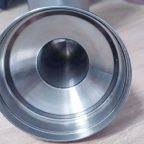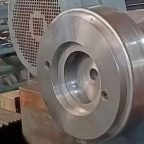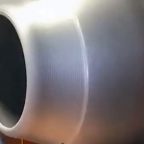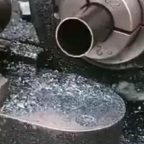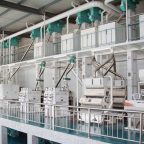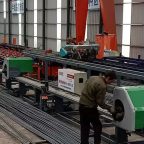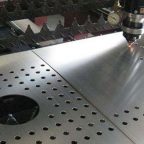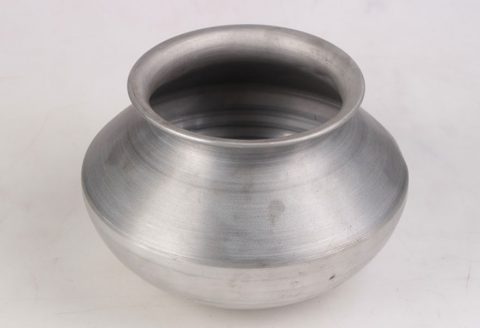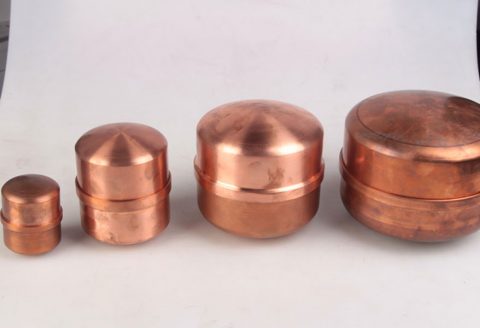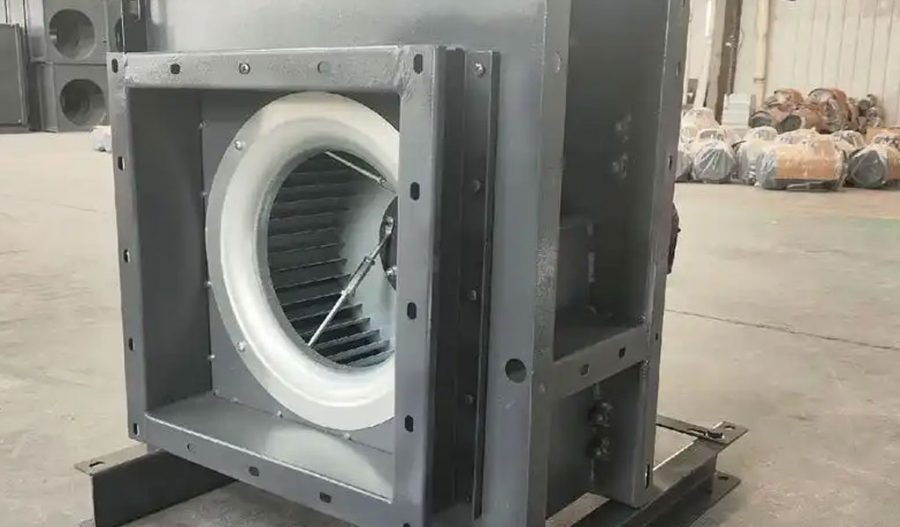
Hydroforming, magnetic drive systems, and rotary pump technologies represent advanced engineering solutions that have significantly impacted various industries, including chemical processing, medical device manufacturing, automotive, and aerospace. This article provides a comprehensive exploration of hydroforming as applied to magnetic and rotary pumps, delving into their principles, designs, applications, advantages, limitations, and future prospects. The tone and structure aim to mirror the rigor and neutrality of a scientific encyclopedia, with detailed comparisons presented in tables to enhance clarity and utility.
Introduction
Hydroforming is a specialized metal-forming process that utilizes high-pressure hydraulic fluid to shape ductile metals, such as aluminum, stainless steel, and titanium, into complex geometries. The process is particularly valued for producing lightweight, high-strength components with minimal material waste, making it a preferred method in industries requiring precision and durability. Magnetic and rotary pumps, which often incorporate hydroformed components, are critical in applications where fluid transfer must be reliable, leak-free, and efficient. Magnetic drive pumps eliminate mechanical seals through magnetic coupling, reducing leakage risks, while rotary pumps, including vane, gear, and screw types, provide consistent flow for viscous or sensitive fluids. The integration of hydroforming in these pumps enhances their performance by enabling intricate designs that improve structural integrity and operational efficiency.
This article examines the synergy between hydroforming and the design of magnetic and rotary pumps, exploring their historical development, technical principles, manufacturing processes, and real-world applications. Detailed tables compare key parameters, such as material properties, pump performance metrics, and cost considerations, to provide a robust reference for engineers, researchers, and industry professionals.
Historical Context
Origins of Hydroforming
The concept of hydroforming traces its roots to the 1950s, when Fred Leuthesser, Jr., and John Fox of the Schaible Company in Cincinnati, Ohio, patented a process known as “hydramolding.” Initially developed for producing kitchen spouts, hydramolding leveraged hydraulic pressure to form metal with reduced graininess, facilitating smoother finishes. By the 1970s, hydroforming gained traction in industrial applications, particularly in the oil and gas sector, where it was used to create large T-shaped joints. The automotive industry adopted the technology in the 1990s to produce lightweight chassis components, driven by the need for fuel efficiency and emissions reduction. Today, hydroforming is a cornerstone of advanced manufacturing, with applications spanning aerospace, medical devices, and pump manufacturing.
Evolution of Magnetic and Rotary Pumps
Magnetic drive pumps emerged as a response to the limitations of conventional sealed pumps, which often suffered from seal wear and leakage in handling corrosive or hazardous fluids. The development of magnetic coupling, utilizing rare-earth magnets like neodymium-iron-boron and samarium-cobalt, enabled seal-less designs that improved safety and reliability. The first commercial magnetic drive pumps appeared in the mid-20th century, with significant advancements in the 1980s as materials science improved magnet performance and corrosion resistance.
Rotary pumps, including sliding vane, gear, and screw designs, have a longer history, dating back to the 19th century. These pumps were initially developed for industrial applications requiring consistent flow, such as in oil refining and chemical processing. The integration of hydroformed components into rotary pumps began in the late 20th century, as manufacturers sought to enhance durability and reduce production costs through advanced forming techniques.
Convergence of Technologies
The convergence of hydroforming with magnetic and rotary pump technologies reflects a broader trend toward precision engineering and sustainability. Hydroforming enables the production of complex pump housings and impellers with enhanced strength-to-weight ratios, while magnetic and rotary designs address the need for leak-free and efficient fluid transfer. This synergy has positioned these technologies as critical enablers in industries where safety, efficiency, and environmental compliance are paramount.
Principles of Hydroforming
Fundamentals of the Process
Hydroforming is a cold-forming process that uses high-pressure hydraulic fluid to press a metal blank or tube into a die, shaping it into the desired geometry. The process can be categorized into two primary types: tube hydroforming and sheet hydroforming.
- Tube Hydroforming: Involves placing a hollow metal tube inside a negative mold, followed by the injection of hydraulic fluid at pressures up to 400 MPa (58,000 psi). The fluid expands the tube until it conforms to the mold’s shape, producing components with complex cross-sections. This method is widely used for automotive frame rails and pump housings.
- Sheet Hydroforming: Utilizes a single metal sheet placed over a die, with hydraulic fluid or a bladder applying pressure to form the sheet into the die cavity. This technique is suitable for producing flat or shallow components, such as pump covers or medical device enclosures.
The process offers several advantages, including the ability to form complex shapes with uniform thickness, reduced tooling costs (since only one die is typically required), and improved material properties due to work hardening. However, it requires precise control of pressure, die design, and material selection to avoid defects like wrinkling or fracturing.
Hydroforming in Pump Manufacturing
In magnetic and rotary pumps, hydroforming is used to create components such as pump housings, impellers, and containment shells. These components must withstand high internal pressures, corrosive fluids, and mechanical stresses. Hydroforming enables the production of seamless, high-strength parts that enhance pump reliability and performance. For example, in magnetic drive pumps, hydroformed containment shells provide a hermetic barrier between the motor and fluid, eliminating the need for mechanical seals. In rotary pumps, hydroformed housings reduce weight and improve flow dynamics, enhancing efficiency.
Materials Used in Hydroforming
Hydroforming is compatible with a wide range of metals, selected based on their ductility, strength, and corrosion resistance. Common materials include:
- Stainless Steel (e.g., 316, 304): Offers excellent corrosion resistance, making it ideal for chemical and marine applications.
- Titanium: Prized for its strength, lightweight nature, and biocompatibility, titanium is used in medical pumps and aerospace applications.
- Aluminum: Lightweight and corrosion-resistant, aluminum is used in automotive and industrial pumps where weight reduction is critical.
- Hastelloy: A high-performance alloy used in pumps handling highly corrosive fluids, such as in oil refining.
The choice of material impacts the hydroforming process, as each metal has unique yield strengths, elongation properties, and forming limits. Table 1 compares the properties of common hydroforming materials.
Table 1: Material Properties for Hydroforming
| Material | Yield Strength (MPa) | Ultimate Tensile Strength (MPa) | Elongation (%) | Corrosion Resistance | Common Applications |
|---|---|---|---|---|---|
| Stainless Steel (316) | 290 | 580 | 40 | Excellent | Chemical pumps, marine |
| Titanium | 880 | 950 | 15 | Outstanding | Medical pumps, aerospace |
| Aluminum (6061) | 240 | 310 | 17 | Good | Automotive, industrial pumps |
| Hastelloy C-276 | 355 | 790 | 60 | Superior | Oil refining, corrosive fluids |
Principles of Magnetic Drive Pumps
Magnetic Coupling Mechanism
Magnetic drive pumps, also known as mag-drive pumps, operate using a magnetic coupling to transmit torque from the motor to the impeller, eliminating the need for a mechanical shaft seal. The system consists of two sets of magnets: an outer magnet assembly connected to the motor shaft and an inner magnet assembly attached to the impeller. These magnets are separated by a containment shell or shroud, which prevents fluid leakage. The magnetic field aligns the inner and outer magnets, causing the impeller to rotate synchronously with the motor.
The use of rare-earth magnets, such as neodymium-iron-boron (NdFeB) or samarium-cobalt (SmCo), enhances torque transmission and allows for compact designs. However, these magnets require protective coatings (e.g., PTFE, stainless steel) to resist corrosion from aggressive fluids. The containment shell, often hydroformed from stainless steel or Hastelloy, must be thin enough to minimize magnetic losses while robust enough to withstand internal pressures.
Advantages of Magnetic Drive Pumps
Magnetic drive pumps offer several advantages over conventional sealed pumps:
- Leak-Free Operation: The absence of mechanical seals eliminates leakage risks, making mag-drive pumps ideal for handling toxic, corrosive, or hazardous fluids.
- Reduced Maintenance: Seal-less designs reduce wear and maintenance costs, improving reliability and uptime.
- Environmental Safety: By preventing fluid leaks, mag-drive pumps comply with stringent environmental regulations, reducing the risk of contamination.
- Versatility: Available in metallic and non-metallic materials, mag-drive pumps can handle a wide range of fluids, from acids to ultra-pure liquids.
Limitations
Despite their advantages, magnetic drive pumps have limitations:
- Power Constraints: Magnetic coupling limits the maximum torque, restricting mag-drive pumps to lower power ratings compared to sealed pumps.
- Cost: The use of rare-earth magnets and precision hydroformed components increases manufacturing costs.
- Viscosity and Solids: Mag-drive pumps are less effective for highly viscous fluids or those containing solids, as these can cause decoupling or wear.
Principles of Rotary Pumps
Types of Rotary Pumps
Rotary pumps are positive displacement pumps that deliver a consistent flow by trapping and moving fluid through rotating elements. Common types include:
- Sliding Vane Pumps: Use retractable vanes that slide in and out of a rotor to create chambers that move fluid. They are versatile and self-priming, suitable for low-viscosity fluids.
- Gear Pumps: Employ intermeshing gears to trap and transfer fluid. They are robust and efficient for high-viscosity fluids like oils.
- Screw Pumps: Utilize rotating screws to move fluid along the screw axis, ideal for high-pressure and viscous applications.
Hydroforming enhances rotary pump performance by producing lightweight, seamless housings and rotors that improve flow dynamics and reduce wear.
Operational Characteristics
Rotary pumps are characterized by:
- Constant Flow: Their positive displacement design ensures steady flow regardless of system pressure, unlike centrifugal pumps.
- Self-Priming: Many rotary pumps can draw fluid into the pump without external priming, enhancing operational flexibility.
- Low Shear: Rotary pumps minimize fluid shear, making them suitable for sensitive fluids like emulsions or biological solutions.
Applications
Rotary pumps are used in:
- Chemical Processing: Handling viscous or corrosive chemicals with minimal leakage.
- Oil and Gas: Transferring crude oil, lubricants, and hydrocarbons in refining processes.
- Marine: Pumping bilge water or fuel in subsea and shipboard applications.
Integration of Hydroforming in Pump Design
Hydroformed Components
Hydroforming is integral to the production of critical pump components, including:
- Pump Housings: Seamless, high-strength housings that withstand internal pressures and corrosive fluids. Hydroforming ensures uniform thickness and eliminates welds, reducing failure points.
- Containment Shells: In magnetic drive pumps, hydroformed shells provide a hermetic seal, minimizing magnetic losses and ensuring durability.
- Impellers and Rotors: Hydroformed impellers and rotors offer complex geometries that optimize flow and reduce turbulence, enhancing efficiency.
Manufacturing Process
The hydroforming process for pump components involves several steps:
- Material Selection: Choosing a ductile metal (e.g., stainless steel, titanium) based on application requirements.
- Blank Preparation: Cutting a tube or sheet to the appropriate size and shape.
- Die Design: Creating a negative mold that defines the final component geometry.
- Pressurization: Injecting hydraulic fluid at high pressure (up to 400 MPa) to form the metal against the die.
- Finishing: Trimming, machining, or polishing the hydroformed part to meet tolerances.
Advanced finite element analysis (FEA) and computer-aided design (CAD) are used to optimize die design and pressure profiles, minimizing defects like wrinkling or thinning.
Case Study: Ebara’s Hydroformed Volute Casing
Ebara Corporation, a leading pump manufacturer, developed a patented hydroformed one-piece volute casing for its stainless steel pumps. Produced at its Italian factory, the casing undergoes rigorous testing, including one million cycles of pressure pulsations between 6 and 12 bar, to ensure durability. The hydroformed design reduces weight, improves flow efficiency, and enhances reliability, as demonstrated in Ebara’s 3LS and 3M series pumps. This innovation highlights the transformative potential of hydroforming in pump manufacturing.
Applications of Hydroformed Magnetic and Rotary Pumps
Chemical Processing
Magnetic drive pumps with hydroformed components are widely used in chemical plants to transfer corrosive, toxic, or high-temperature fluids. The seal-less design prevents leaks, while hydroformed housings and shells resist chemical corrosion. Applications include pumping acids, alkalis, and solvents.
Rotary pumps, particularly gear and screw types, handle viscous chemicals and polymers, ensuring consistent flow and low shear. Hydroformed rotors and housings enhance durability and reduce maintenance in these demanding environments.
Medical Devices
Hydroforming has revolutionized the production of titanium housings for implantable medical pumps, such as those used for drug delivery. These pumps require biocompatible, lightweight, and corrosion-resistant materials. Hydroforming produces contoured titanium housings with smooth edges and precise dimensions, as demonstrated by Hudson Tool & Die’s work for Arrow International. The process reduces tooling costs and enables rapid prototyping, critical for medical device development.
Oil and Gas
In the oil and gas industry, magnetic drive pumps are used to transfer hydrocarbons like benzene and ethylene, which are highly toxic and explosive. Hydroformed containment shells and housings ensure leak-free operation, reducing environmental and safety risks. Rotary pumps, such as screw pumps, handle crude oil and lubricants, with hydroformed components improving efficiency and longevity.
Automotive and Aerospace
Hydroforming is extensively used in the automotive industry to produce lightweight pump components for fuel and cooling systems. Magnetic drive pumps with hydroformed shells are employed in electric vehicles to manage battery cooling fluids, while rotary pumps handle lubricants and hydraulic fluids. In aerospace, hydroformed titanium and aluminum components are used in fuel pumps, where weight reduction and reliability are critical.
Marine and Renewable Energy
Magnetic drive rotary vane pumps, such as those supplied by North Ridge Pumps, are used in marine applications to pump bilge water and fuel. The seal-less design and hydroformed components ensure reliability in harsh subsea environments. In renewable energy, these pumps support tidal energy systems by transferring fluids in subsea turbines, contributing to sustainable power generation.
Comparative Analysis
Performance Metrics
Table 2 compares the performance metrics of hydroformed magnetic and rotary pumps, focusing on flow rate, pressure, efficiency, and material compatibility.
Table 2: Performance Comparison of Hydroformed Magnetic and Rotary Pumps
| Pump Type | Max Flow Rate (L/min) | Max Pressure (bar) | Efficiency (%) | Material Compatibility | Typical Applications |
|---|---|---|---|---|---|
| Magnetic Drive (Centrifugal) | 500 | 40 | 70-85 | Stainless steel, Hastelloy, PTFE | Chemical processing, medical devices |
| Sliding Vane (Rotary) | 300 | 14 | 60-75 | Stainless steel, aluminum | Marine, oil transfer |
| Gear (Rotary) | 200 | 20 | 65-80 | Stainless steel, cast iron | Oil and gas, chemical processing |
| Screw (Rotary) | 400 | 50 | 70-90 | Stainless steel, Hastelloy | High-viscosity fluids, oil refining |
Cost and Manufacturing Considerations
Table 3 compares the cost and manufacturing characteristics of hydroformed magnetic and rotary pumps, including tooling costs, production time, and scalability.
Table 3: Cost and Manufacturing Comparison
| Pump Type | Tooling Cost (USD) | Production Time (hrs/part) | Scalability | Material Cost (USD/kg) | Maintenance Cost (USD/yr) |
|---|---|---|---|---|---|
| Magnetic Drive | 10,000-50,000 | 0.5-2 | High | 20-100 | 500-2,000 |
| Sliding Vane | 5,000-20,000 | 0.3-1.5 | Medium | 10-50 | 300-1,500 |
| Gear | 8,000-25,000 | 0.4-1.8 | High | 15-60 | 400-1,800 |
| Screw | 15,000-60,000 | 0.6-2.5 | Medium | 20-80 | 600-2,500 |
Advantages and Limitations
Table 4 summarizes the advantages and limitations of hydroformed magnetic and rotary pumps, providing a balanced perspective for design and application decisions.
Table 4: Advantages and Limitations
| Pump Type | Advantages | Limitations |
|---|---|---|
| Magnetic Drive | Leak-free, low maintenance, corrosion-resistant, environmentally safe | Limited power, high cost, unsuitable for solids or high-viscosity fluids |
| Sliding Vane | Self-priming, versatile, low pulsation, suitable for low-viscosity fluids | Limited pressure, wear on vanes, less efficient for high viscosity |
| Gear | Robust, high-viscosity handling, reliable, compact | Limited to moderate pressures, potential for gear wear |
| Screw | High pressure, high viscosity, low shear, efficient | Complex design, higher cost, maintenance-intensive |
Challenges and Future Directions
Technical Challenges
- Material Limitations: While hydroforming is versatile, certain high-strength alloys may exhibit limited ductility, leading to cracking or thinning during forming. Advances in material science, such as cryorolling, could enhance formability.
- Precision Control: Achieving uniform thickness and avoiding defects requires precise pressure and die design. Real-time monitoring and adaptive control systems could improve process reliability.
- Magnet Performance: In magnetic drive pumps, rare-earth magnets are susceptible to corrosion and demagnetization at high temperatures. Developing more resilient coatings and alternative magnet materials is a priority.
- Scalability: Hydroforming is cost-effective for medium to high-volume production but less so for low-volume runs due to die costs. Modular die designs could enhance flexibility for prototyping and small batches.
Emerging Trends
- Nanofluid Pumping: Magnetohydrodynamic (MHD) pumps, which use magnetic fields to mobilize conductive fluids, are gaining attention for nanofluid applications in biomedicine and energy systems. Hydroforming could enable the production of compact, high-precision MHD pump components.
- Soft Robotics: Magnetohydrodynamic levitation, combined with hydroformed elastomeric components, is being explored for soft robotic pumps. These pumps offer deformable, high-performance solutions for medical and industrial applications.
- Sustainability: Hydroforming reduces material waste and energy consumption compared to traditional forming methods. Integrating recycled materials and optimizing process efficiency could further enhance its environmental benefits.
Research and Development
Ongoing research focuses on:
- Finite Element Modeling: Advanced FEA tools are improving the design of hydroforming processes, enabling predictive modeling of complex geometries and material behavior.
- Hybrid Processes: Combining hydroforming with other techniques, such as additive manufacturing, could enable the production of hybrid components with enhanced functionality.
- Smart Pumps: Integrating sensors and IoT technologies into hydroformed pumps could enable real-time monitoring of performance, wear, and fluid conditions, improving reliability and maintenance.
Conclusion
Hydroforming, magnetic drive, and rotary pump technologies represent a powerful convergence of advanced manufacturing and fluid dynamics. Hydroforming enables the production of lightweight, high-strength components that enhance the performance and reliability of magnetic and rotary pumps. These pumps, in turn, address critical needs in industries ranging from chemical processing to medical devices, offering leak-free operation, high efficiency, and compatibility with challenging fluids. While challenges such as material limitations and cost remain, ongoing innovations in materials, process control, and hybrid technologies promise to expand their capabilities.
The detailed comparisons provided in this article highlight the strengths and trade-offs of hydroformed magnetic and rotary pumps, offering a valuable resource for engineers and researchers. As industries continue to prioritize efficiency, safety, and sustainability, the integration of hydroforming with advanced pump designs will play a pivotal role in shaping the future of fluid transfer technology.
Maximize Tooling and CNC Metal Spinning Capabilities.
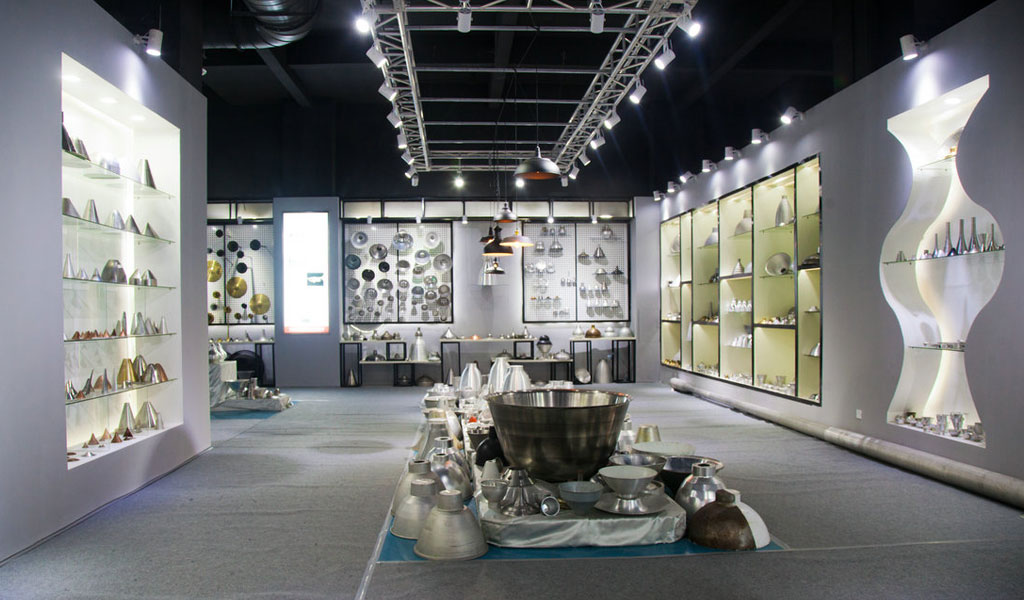
At BE-CU China Metal Spinning company, we make the most of our equipment while monitoring signs of excess wear and stress. In addition, we look into newer, modern equipment and invest in those that can support or increase our manufacturing capabilities. Our team is very mindful of our machines and tools, so we also routinely maintain them to ensure they don’t negatively impact your part’s quality and productivity.
Talk to us today about making a rapid prototype with our CNC metal spinning service. Get a direct quote by chatting with us here or request a free project review.
BE-CU China CNC Metal Spinning service include : CNC Metal Spinning,Metal Spinning Die,Laser Cutting, Tank Heads Spinning,Metal Hemispheres Spinning,Metal Cones Spinning,Metal Dish-Shaped Spinning,Metal Trumpet Spinning,Metal Venturi Spinning,Aluminum Spinning Products,Stainless Steel Spinning Products,Copper Spinning Products,Brass Spinning Products,Steel Spinning Product,Metal Spinnin LED Reflector,Metal Spinning Pressure Vessel,
